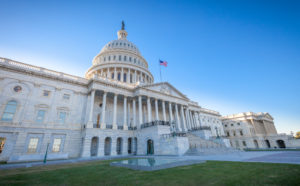
The Senate passed Aug. 1 the Bipartisan Budget Act of 2019, officially setting defense funding toplines for the next two years and allowing the U.S. government to avoid any further sequestration threats. H.R. 3877 sets the defense spending topline at $738 billion in fiscal year 2020, and at $741.5 billion in FY ’21. While that is tens of billions less than the $750 billion topline that the Senate approved in its version of the FY ’20 National Defense Authorization Act,…

 By
By 











